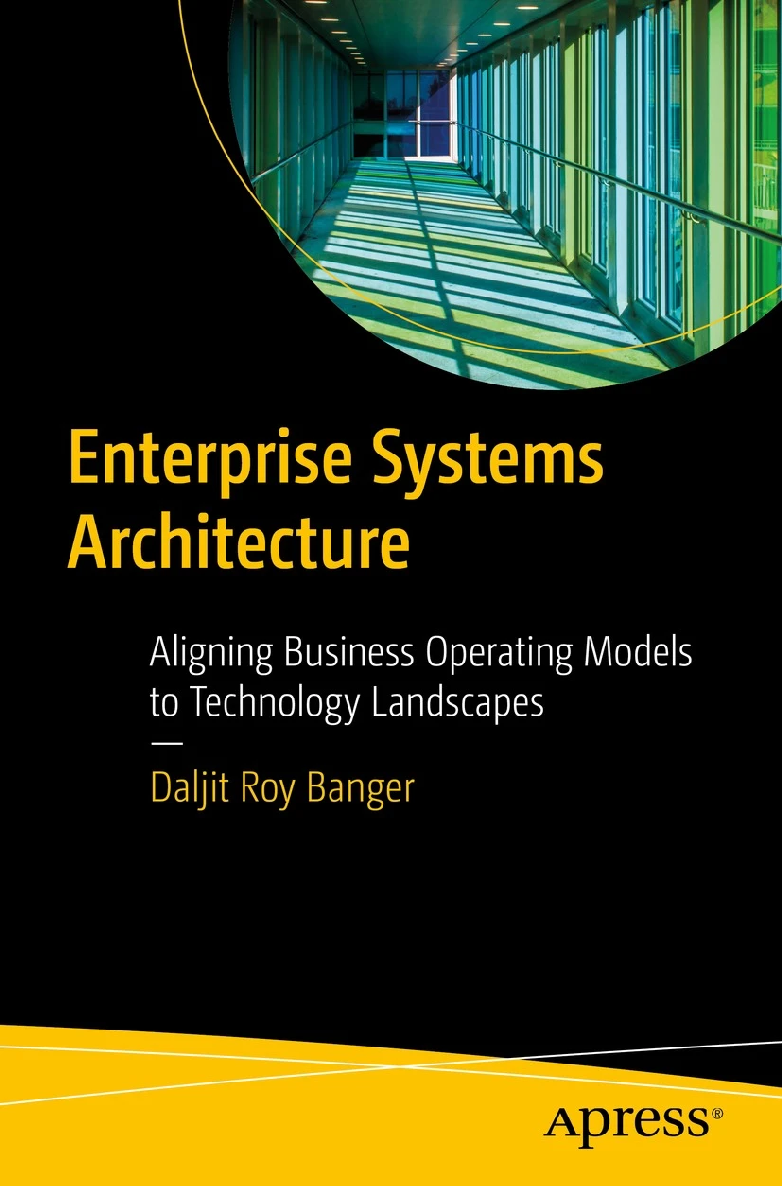 Enterprise SystemsArchitectureAligning Business OperatingModels to TechnologyLandscapesDaljit Roy BangerEnterprise Systems Architecture: Aligning Business Operating Models toTechnology Landscapes Daljit Roy Banger London, UK ISBN-13 (pbk): 978-1-4842-8645-6 ISBN-13 (electronic): 978-1-4842-8646-3 https://doi.org/10.1007/978-1-4842-8646-3 Copyright 2022 by Daljit Roy Banger This work is subject to copyright. All rights are reserved by the Publisher, whether the whole or part of the material is concerned, specifically the rights of translation, reprinting, reuse of illustrations, recitation, broadcasting, reproduction on microfilms or in any other physical way, and transmission or information storage and retrieval, electronic adaptation, computer software, or by similar or dissimilar methodology now known or hereafter developed. Trademarked names, logos, and images may appear in this book. Rather than use a trademark symbol with every occurrence of a trademarked name, logo, or image we use the names, logos, and images only in an editorial fashion and to the benefit of the trademark owner, with no intention of infringement of the trademark. The use in this publication of trade names, trademarks, service marks, and similar terms, even if they are not identified as such, is not to be taken as an expression of opinion as to whether or not they are subject to proprietary rights. While the advice and information in this book are believed to be true and accurate at the date of publication, neither the authors nor the editors nor the publisher can accept any legal responsibility for any errors or omissions that may be made.
Enterprise SystemsArchitectureAligning Business OperatingModels to TechnologyLandscapesDaljit Roy BangerEnterprise Systems Architecture: Aligning Business Operating Models toTechnology Landscapes Daljit Roy Banger London, UK ISBN-13 (pbk): 978-1-4842-8645-6 ISBN-13 (electronic): 978-1-4842-8646-3 https://doi.org/10.1007/978-1-4842-8646-3 Copyright 2022 by Daljit Roy Banger This work is subject to copyright. All rights are reserved by the Publisher, whether the whole or part of the material is concerned, specifically the rights of translation, reprinting, reuse of illustrations, recitation, broadcasting, reproduction on microfilms or in any other physical way, and transmission or information storage and retrieval, electronic adaptation, computer software, or by similar or dissimilar methodology now known or hereafter developed. Trademarked names, logos, and images may appear in this book. Rather than use a trademark symbol with every occurrence of a trademarked name, logo, or image we use the names, logos, and images only in an editorial fashion and to the benefit of the trademark owner, with no intention of infringement of the trademark. The use in this publication of trade names, trademarks, service marks, and similar terms, even if they are not identified as such, is not to be taken as an expression of opinion as to whether or not they are subject to proprietary rights. While the advice and information in this book are believed to be true and accurate at the date of publication, neither the authors nor the editors nor the publisher can accept any legal responsibility for any errors or omissions that may be made.
The publisher makes no warranty, express or implied, with respect to the material contained herein. Managing Director, Apress Media LLC: Welmoed Spahr Acquisitions Editor: Aditee Mirashi Development Editor: James Markham Coordinating Editor: Aditee Mirashi Copy Editor: Kim Wimpsett Cover designed by eStudioCalamar Cover image designed by Freepik (www.freepik.com) Distributed to the book trade worldwide by Springer Science+Business Media New York, 1 New York Plaza, Suite 4600, New York, NY 10004-1562, USA. Phone 1-800-SPRINGER, fax (201) 348-4505, e-mail orders-ny@springer-sbm.com, or visit www.springeronline.com. Apress Media, LLC is a California LLC and the sole member (owner) is Springer Science + Business Media Finance Inc (SSBM Finance Inc). SSBM Finance Inc is a Delaware corporation. For information on translations, please e-mail booktranslations@springernature.com; for reprint, paperback, or audio rights, please e-mail bookpermissions@springernature.com.
Apress titles may be purchased in bulk for academic, corporate, or promotional use. eBook versions and licenses are also available for most titles. For more information, reference our Print and eBook Bulk Sales web page at http://www.apress.com/bulk-sales. Printed on acid-free paper A ruler must guard against two kinds of danger:one internal, coming from his own people; the otherexternal, coming from foreign powers.Niccol MachiavelliTable of Contents About the Author xi About the Technical Reviewer xiii Acknowledgments xv Preface xvii Introduction xxvii Further Material xxxv Part 1 1 Chapter 1: Architectural Purpose 3 Architectural Approaches/Styles 7 UK Ministry of Defence Architecture Framework 11 US Department of Defense Architecture Framework 13 The Open Groups TOGAF Framework 14 Zachman Framework 16 Federal Enterprise Architecture Framework 17 Meta-Models/Reference Architectures 19 Summary21 Part 2 23 Chapter 2: The Stack 25 The Architectural Stack 26 Layers Expanded and Explored 30 Summary 32 v Table of ConTenTs Chapter 3: Layer 0: The Business Operating Model 33 BOM Considerations 36 External Forces: Industry Shapers and Disruptors 37 Drivers for Change 40 Enterprise Structure 41 Business Models 42 Information Resources 43 Financial Management 44 Tools/Methods 45 The Business Model Canvas 46 Structure Conduct Performance (SCP) 47 PEST Analysis 48 SWOT Analysis 49 Porters: 5 Forces/Value Chain50 Summary 53 Chapter 4: Layer 1: Business Process Layer 55 Layer 1: BOM Analysis Considerations 64 Summary70 Chapter 5: Layer 2: Capabilities and Services 71 Capability/Service Layer Considerations75 Example Mapping: Automobile Industry 80 Summary 81 Chapter 6: Layer 3: Applications 83 Components to Analyze, Consider, and Manage in the Application Layer 85 Summary 102 vi Table of ConTenTs Chapter 7: Layer 4: Data/Information Services 103 Classification and Information Types 104 Enterprise Data Lifecycle/Journey 106 Enterprise Data Governance 109 Big Data 111 Data Warehouses/Data Lakes 112 Summary113 Chapter 8: Layer 5: Technology Services (Logical) 115 Summary119 Chapter 9: Layer 6: Enabling Technology (Physical) 121 End-User Computing 122 Hosting (Physical/Virtual) 123 Connectivity 126 Appliances 127 Energy 127 Support 128 Management 128 Summary129 Chapter 10: Layer 7: Value-Added Services and Hygiene Services 131 The Stack: Additional Notes 137 Summary 138 Part 3 139 Chapter 11: Products for Delivering the EA 141 Contributing Factors 143 Reference Models 154 vii Table of ConTenTs IT Governance 156 Design Authorities/Architectural Review Boards 159 Technical Debt Management 161 Why Is Technical Debt Important to Enterprise Architects? 164 Potential Factors for Technical Debt Creation165 Can You Avoid Technical Debt? 166 How Can You Manage (Repay) the Debt? 166 Summary 168 Chapter 12: Clustering Artifacts: The Five Ps Framework 169 Summary 172 Chapter 13: Managing Technology Change: Architectural Impact Assessment Guidelines173 Identify/Analyze the Change Required 176 Use Cases 178 Define a Map 179 The Impact Horizon: System Components for Analysis 180 AIA Deliverables 186 Putting It All Together 187 Summary190 Part 4 191 Chapter 14: Roles and Responsibilities 193 Enterprise Architects 195 Solution Architects 199 Technical Architects 206 viii Table of ConTenTs Aligning Architectural Skills to Competencies Models 208 Summary 209 Part 5 211 Chapter 15: Developing the ICT Strategy 213 A Simple Strategy Pattern 215 The Strategy Cycle 219 Summary 229 A Final Note 231 Appendix 233 Common Enterprise Architectural Principles 233 Business Models Definition 237 Example Industry Disruption: Regulation (PSD-2 Payments) and the Stack 238 Analysis Areas Mapped to the Stack 242 Regulatory Change and Impact on the Stack: GDPR Example 245 Business Operating Model 246 Business Processes 246 Capabilities Services 247 Applications 247 Data and Information 248 Technology Services 248 Hygiene Services 249 ICT Strategy Pattern: ING Group Example/Exercise 250 Example Table of Contents for an ICT Strategy 260 Nonfunctional Requirements 262 ix Table of ConTenTs Example of Five Ps Clustering 266 Third-Party Websites 267 Glossary of Terms/Acronyms 270 Bibliography: Suggested Further Reading 275 Cheat Sheet: Architectural Impact Assessment 277 Index 279 x  About the AuthorDaljit Banger has 38 years of IT industry experience, having undertaken assignments in locations across the globe, including the United Kingdom, the United States, Sweden, Switzerland, Finland, Hong Kong, and Brazil, to name a few, on behalf of large, multinational companies. Daljit has successfully managed several large professional teams of architects, has contributed to several publications, and is the author of several freeware software products for enterprise architecture. xi
About the AuthorDaljit Banger has 38 years of IT industry experience, having undertaken assignments in locations across the globe, including the United Kingdom, the United States, Sweden, Switzerland, Finland, Hong Kong, and Brazil, to name a few, on behalf of large, multinational companies. Daljit has successfully managed several large professional teams of architects, has contributed to several publications, and is the author of several freeware software products for enterprise architecture. xi 
Next page

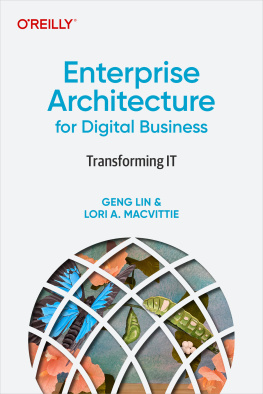
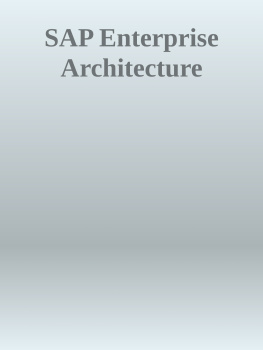
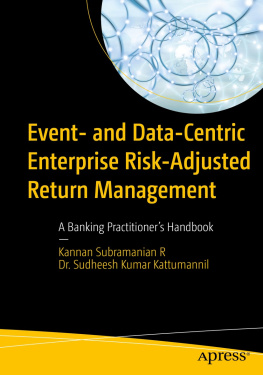
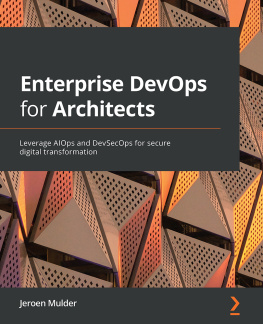


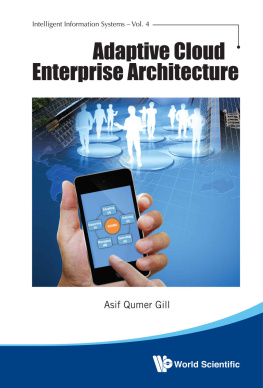
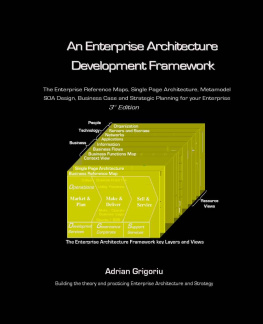
 Enterprise SystemsArchitectureAligning Business OperatingModels to TechnologyLandscapesDaljit Roy BangerEnterprise Systems Architecture: Aligning Business Operating Models toTechnology Landscapes Daljit Roy Banger London, UK ISBN-13 (pbk): 978-1-4842-8645-6 ISBN-13 (electronic): 978-1-4842-8646-3 https://doi.org/10.1007/978-1-4842-8646-3 Copyright 2022 by Daljit Roy Banger This work is subject to copyright. All rights are reserved by the Publisher, whether the whole or part of the material is concerned, specifically the rights of translation, reprinting, reuse of illustrations, recitation, broadcasting, reproduction on microfilms or in any other physical way, and transmission or information storage and retrieval, electronic adaptation, computer software, or by similar or dissimilar methodology now known or hereafter developed. Trademarked names, logos, and images may appear in this book. Rather than use a trademark symbol with every occurrence of a trademarked name, logo, or image we use the names, logos, and images only in an editorial fashion and to the benefit of the trademark owner, with no intention of infringement of the trademark. The use in this publication of trade names, trademarks, service marks, and similar terms, even if they are not identified as such, is not to be taken as an expression of opinion as to whether or not they are subject to proprietary rights. While the advice and information in this book are believed to be true and accurate at the date of publication, neither the authors nor the editors nor the publisher can accept any legal responsibility for any errors or omissions that may be made.
Enterprise SystemsArchitectureAligning Business OperatingModels to TechnologyLandscapesDaljit Roy BangerEnterprise Systems Architecture: Aligning Business Operating Models toTechnology Landscapes Daljit Roy Banger London, UK ISBN-13 (pbk): 978-1-4842-8645-6 ISBN-13 (electronic): 978-1-4842-8646-3 https://doi.org/10.1007/978-1-4842-8646-3 Copyright 2022 by Daljit Roy Banger This work is subject to copyright. All rights are reserved by the Publisher, whether the whole or part of the material is concerned, specifically the rights of translation, reprinting, reuse of illustrations, recitation, broadcasting, reproduction on microfilms or in any other physical way, and transmission or information storage and retrieval, electronic adaptation, computer software, or by similar or dissimilar methodology now known or hereafter developed. Trademarked names, logos, and images may appear in this book. Rather than use a trademark symbol with every occurrence of a trademarked name, logo, or image we use the names, logos, and images only in an editorial fashion and to the benefit of the trademark owner, with no intention of infringement of the trademark. The use in this publication of trade names, trademarks, service marks, and similar terms, even if they are not identified as such, is not to be taken as an expression of opinion as to whether or not they are subject to proprietary rights. While the advice and information in this book are believed to be true and accurate at the date of publication, neither the authors nor the editors nor the publisher can accept any legal responsibility for any errors or omissions that may be made. About the AuthorDaljit Banger has 38 years of IT industry experience, having undertaken assignments in locations across the globe, including the United Kingdom, the United States, Sweden, Switzerland, Finland, Hong Kong, and Brazil, to name a few, on behalf of large, multinational companies. Daljit has successfully managed several large professional teams of architects, has contributed to several publications, and is the author of several freeware software products for enterprise architecture. xi
About the AuthorDaljit Banger has 38 years of IT industry experience, having undertaken assignments in locations across the globe, including the United Kingdom, the United States, Sweden, Switzerland, Finland, Hong Kong, and Brazil, to name a few, on behalf of large, multinational companies. Daljit has successfully managed several large professional teams of architects, has contributed to several publications, and is the author of several freeware software products for enterprise architecture. xi 